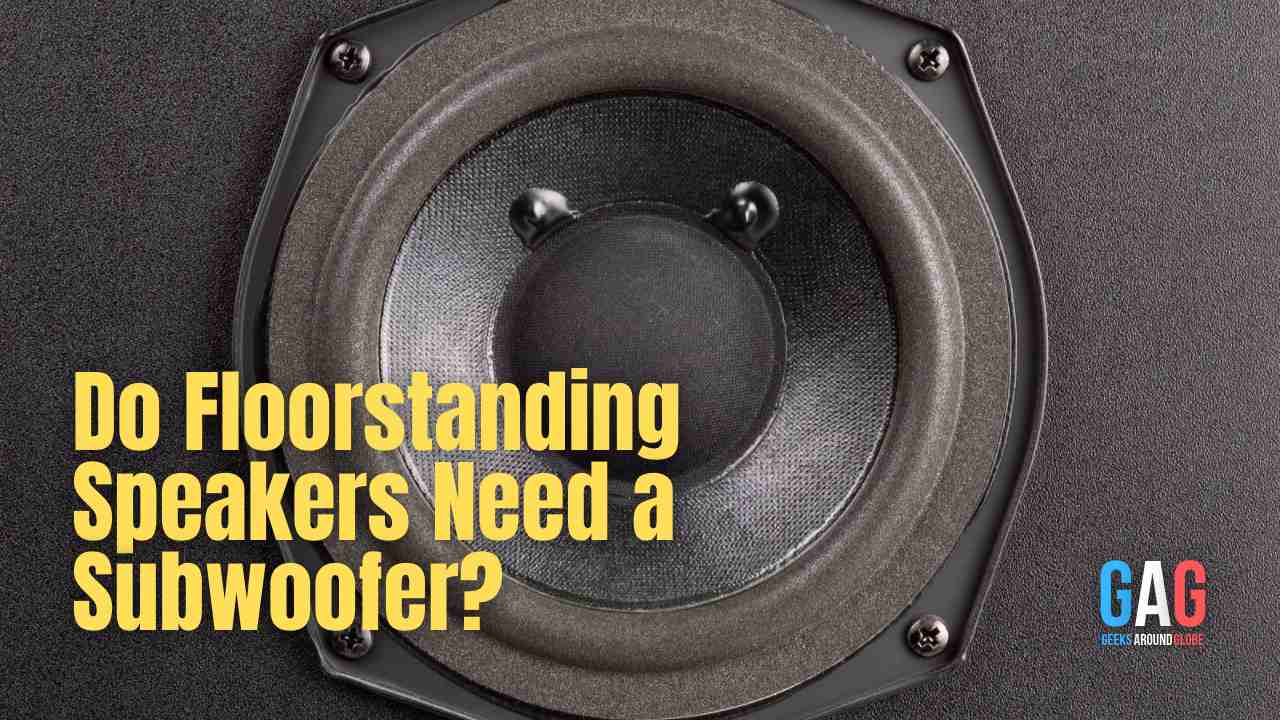In audio equipment, floor standing or tower speakers are standouts. Not only can they supercharge your sound systems, but they also have a contemporary look that could fit perfectly well with the setup’s other elements.
Whether you need it for your television, gaming console, or sound system, floor-standing speakers can deliver. But do these devices require a subwoofer? That’s a question we’ll be answering today.
Floorstanding speakers can work independent of a subwoofer, but that doesn’t necessarily mean you’d want yours working without one. A subwoofer can take speaker sounds to the next level by introducing a powerful and intense bass.
While great quality speakers on a budget can have good bass, they won’t even come close to the level they would when integrated with top-notch subwoofers.
So, yes, a subwoofer does make a difference. Your floor-standing units won’t necessarily need one, but you’ll want to use them with one more often than not. Let’s find out how quality subwoofers can take your music or home theater systems from ordinary to extraordinary.
What Subwoofers Do
A subwoofer is a loudspeaker that is specially designed to enhance lower frequencies. It uses a pre-configured amplifier and a larger woofer to deliver clean and intense bass. In contrast, floor-standing speakers are unable to deliver this kind of bass.
Subwoofers are essential because they factor heavily into a home theater system’s performance. Their low-bass frequencies deliver depth and richness that enhance the quality of sounds. Without subwoofers in the equation, certain kinds of audio may come across as bland or devoid of character.
Subwoofers also add a “cinematic” element to sounds, making you want to listen. They’re essential for making honking or rumbling sounds as realistic as possible. So, if you’re a fan of disaster films, you’re going to want to integrate this component into your entertainment system.
Floorstanding Speakers and Subwoofers
Whether you’re listening to music or watching a film, bass matters, subwoofers ensure you don’t miss out on powerful bass that can improve your movie or music experience. This is especially true if you’re in a large room where bass reproduction using floor-standing units alone can be tricky.
That said, floor-standing speakers can deliver outstanding bass on their own. But despite producing loud, quality bass, they aren’t capable of replicating this in the lowest frequency range; a subwoofer is.
A film may only deliver its full effect when you have both the right speakers and subwoofers integrated into your home entertainment system. After all, the sound effects matter as much as the visuals. Neither are elements you want to compromise on.
Most floor-standing speakers can’t reproduce bass 20 Hz and lower, so you could use subwoofers for these specific units.
But even if you bought high-end floor-standing speakers that can, they will still have limits regardless. Pair your units with the ideal subwoofer, and you could say goodbye to problems where the bass is concerned.
If you are against purchasing a separate subwoofer, you can opt for a full-range tower speaker with pre-configured subwoofers. Again, these speakers have their limits, so it could be best not to expect the very best from them. The “very best” is usually something you get with individual units used in tandem and not with a two-in-one option.
That’s all there is to it. Even full-range floor standing speakers cannot deliver the perfect bass sounds. A subwoofer has to be in the picture for that to happen.
Subwoofer Placement Is Important
Choosing subwoofers compatible with your set of floor-standing speakers is vital. Another important concept is their placement.
To improve your overall sound experience, your newly added subwoofer has to be set up correctly. And, no, you cannot just place it wherever you want. Otherwise, it could be like it wasn’t integrated into the system to begin with.
The key is to be patient. Do trial and error. You can place the unit close to a wall or near an object for additional bass, but make sure the distance between them is just right for hitting that sweet spot. In most cases, eight to twelve inches between your subwoofer and the wall is needed.
There’s also the room acoustics to take into consideration. Subwoofers tend to perform better in spaces with better acoustics. Consider adding bass traps, acoustic panels, and acoustic diffusers to bring the best out of your subwoofer if your space isn’t that.






